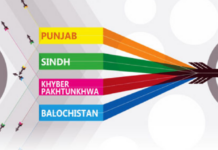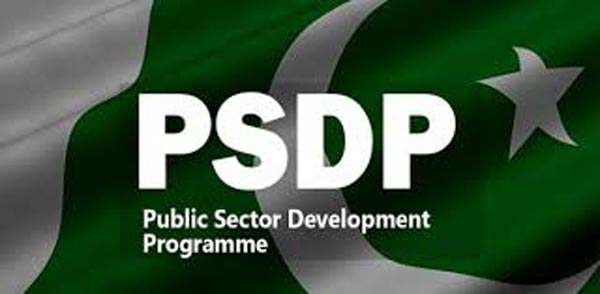The Finance Ministry has proposed a Rs 921 billion ceiling for the Public Sector Development Programme (PSDP) for fiscal year 2025-26, significantly lower than the Planning Ministry’s demand for Rs 1.6 trillion, as the federal government prepares to present the budget on June 2.
The government also released a new development report, revealing that only Rs 449 billion was spent during the first ten months of the current fiscal year, falling short by Rs 648 billion from the planned allocation.
According to a news report, this underperformance, against an annual allocation of Rs 1.1 trillion, undermines the purpose of the National Assembly’s approval of a large-scale Public Sector Development Programme. The Finance Ministry has used spending control as a means to mitigate the negative effects of the Federal Board of Revenue’s tax shortfall.
Federal Minister for PlanningAhsan Iqbal, during a press briefing on Thursday, expressed concerns over the Finance Ministry’s proposed allocation, stating that the current allocation would fall far short of the required amount to meet development needs.
The Planning Ministry’s estimate for overall development programs stands at Rs 2,900 billion, but the Finance Ministry has only allocated Rs 921 billion for the development for fiscal year 2025-26.
Iqbal pointed out that this allocation is lower than the current fiscal year’s Rs 1,100 billion and noted that the shortfall of Rs 179 billion poses a significant challenge. He added that the Ministry of Planning would meet with the Finance Ministry under the supervision of the Prime Minister to discuss these concerns further.
The Minister also highlighted the need for Rs 700 billion in foreign development assistance, warning that the proposed allocation would leave Pakistan unable to meet even this requirement. He stated that without increasing the tax-to-GDP ratio from 16% to 18%, the country would not be able to overcome the resource constraints necessary for development and investment.
Additionally, Iqbal announced that an Annual Plan Coordination Committee (APCC) meeting will be held in the third week of May, followed by a National Economic Council (NEC) meeting in the fourth week of May to approve the macroeconomic and development budget. He emphasized that the Planning Ministry’s goal is to align its budget priorities with the Uraan Pakistan Program, a key initiative to promote sustainable economic growth.
The Minister also noted that the PSDP for the current fiscal year had been revised down from Rs 1,400 billion to Rs 1,100 billion, and that the total development funds authorized so far amounted to Rs 900 billion. With expectations that development fund utilization would reach Rs 750 to Rs 800 billion by the end of June 2025, he added that the government had abolished 200 projects from the PSDP to ensure better resource management.
Iqbal discussed how cost and time overruns in major projects like the Bhasha and Dasu dams, with estimated cost increases ranging from Rs 480 billion to Rs 1,700 billion, have strained the development process. He called for a more rigorous approach to project management to prevent further delays and overspending.
Regarding the government’s economic progress, Iqbal reported a notable reduction in inflation, which dropped from 38% to 2% over the course of the year, and highlighted a current account surplus of $1.86 billion compared to a deficit of $1.65 billion last year. Remittances also showed a 33% increase, reaching $33 billion. The fiscal deficit was reduced from 3.1% to 2.2%, and revenue collection saw a historic 26% increase during the first ten months of the current fiscal year.
Despite these gains, Iqbal reiterated the need to increase the tax-to-GDP ratio and said the government is working with provincial governments to improve their fiscal contributions. He also noted the provinces’ share in national resources under the 18th Amendment and emphasized the importance of their participation in national development.






















